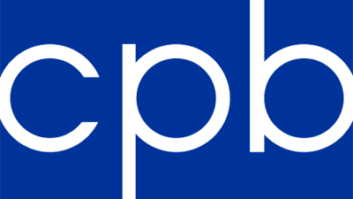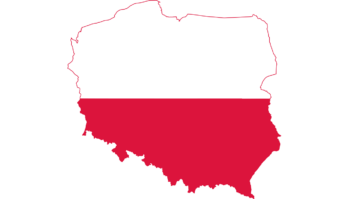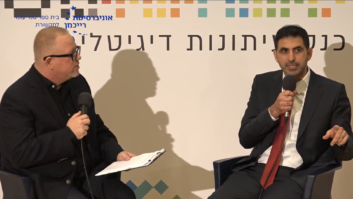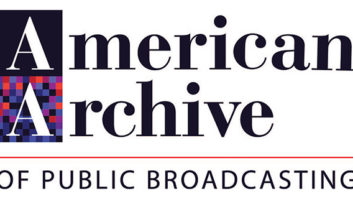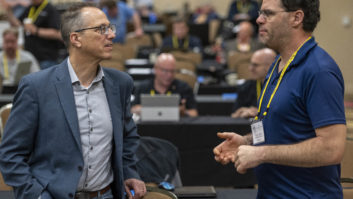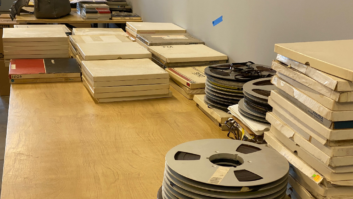“Our nation wants more than just material wealth.…We in America have an appetite for excellence too. While we work every day to produce new goods and to create new wealth, we want most of all to enrich man’s spirit.”


With those words, President Lyndon Johnson signed the Public Broadcasting Act on Nov. 7, 1967, ensuring a flow of programming that continues to this day. With some funding from the government in place and donations filling in the bulk of their budgets, local public stations began creating.
Bigger organizations like National Public Radio and the Public Broadcasting Service found deeper private pockets to fund innovative programming that could not be produced on the local level. The original concept of the Public Broadcasting Act was to encourage these new broadcasters to fill a niche that commercial mass-appeal media could not, and that is what happened.

Alan Gevinson and Karen Cariani
The American Archive of Public Broadcasting is a nonprofit collaboration among the Library of Congress, Boston’s WGBH Educational Foundation and about 120 public radio and TV stations. AAPB’s goal is to search the shelves of broadcasters and private collectors for public radio and TV programs of significance from the past, and with several grants in hand, digitize these pieces of American history to make them available to scholars and other interested parties. In this manner, these valuable performances, newscasts, interviews and documentaries can be preserved for future generations.
To learn more, Radio World spoke with Karen Cariani, director of AAPB and the WGBH media library; Casey Davis, project manager of AAPB at WGBH; and Alan Gevinson from the Library of Congress, who serves as that organization’s project director for AAPB.
Radio World: What was the genesis of AAPB?
Gevinson: In 2007, public broadcasting organizations convinced Congress to allow some funds that had been allocated for the digital conversion of stations to be used to digitally preserve materials sitting unused on shelves in stations representing hundreds of communities across the nation. Congress agreed that this archive of material is a valuable asset to the public and to historians.


Casey Davis
Credit: Photo courtesy of Lisa AbitbolAlan Gevinson
Photo courtesy of Abby Brack LewisCariani: The Corporation for Public Broadcasting funded 120 stations to participate in a content inventory project managed by WGBH. Stations applied for funds to conduct this work themselves or to hire approved teams to do it. Part of the issue with recorded media compared to books is that with the former, you can’t always tell what the content is just by looking at it. Stations found they had saved all kinds of videotape formats over the years including 2-inch, 1-inch, 3/4-inch, .5-inch and helical scan. Audio was found on 1/4-inch tapes and DATs. We had to play a lot of it to figure out what it is, and there may be only one playback possible with some of these tapes.
Davis: Part of the inventory process also involved looking at reels of tape and writing information about each item down, often in a PBCore-compliant CSV or Filemaker template. Information included a unique identifier, title, format, duration, description, generation, date, condition notes, etc. We found a station in Utah that had material from 1955, and here at WGBH, we uncovered an audio disk from 1949, both of which predate the current structure of public broadcasting established in 1967.
RW: What are your standards for the digitized material, and where will you store it?
Davis: For audio we recommend a 96/24 uncompressed linear PCM in a Broadcast Wave Format (.wav). We will make our detailed technical requirements available to people who are interested. Up to this point, we have worked with a single vendor on the digitization of AAPB content, and as we continue to grow the collection, we imagine that we will receive some items that have already been digitized or were born as digital files.
Gevinson: The preservation files will reside in the Library of Congress Packard Campus Digital Archive at the National Audio Visual Conservation Center in Culpepper, Va. Everything will be migrated at least once every five years in perpetuity, and proxy files will be kept at the Library of Congress and at WGBH.

Karen Cariani The AAPB project team, in collaboration with several other parties, is implementing a strategy to make as much of the collection available in our Online Reading Room (launching in October 2015) as possible. The Online Reading Room will be virtual, providing viewing/listening access to potentially thousands of items in the collection and is restricted to research, educational and informational purposes. It will be presented under fair use and other legal doctrines. The entire AAPB collection is available for research on location at WGBH and at the Library of Congress. We want to collaborate with educators and scholars to see how we can best meet their needs, and how to get this material used as broadly as possible.
RW: Sounds like a big project! How are you coming with it?
Cariani: The amount we have digitized so far is about 40,000 hours, or 68,000 items, just a drop in the bucket compared to what is available. We want to grow this collection as we serve as stewards for public broadcasting. Civilization’s cultural and social heritage was documented on paper and in photographs for many years. Unfortunately, video and audio are prone to deterioration much more quickly than those media, so think of the history that will be lost if we can’t migrate this material.
RW: From where do you get your funding?
Cariani: AAPB received $1 million grant from CPB, money designated to cover two years of management of the digitization process and to launch a website where some of the archived material will be available. One grant was also received from the Council on Library Information Resources and another from The Institute of Museum and Library Services, but AAPB still needs more funds to continue the work.
RW: Is this effort related to the Library of Congress National Recording Preservation Plan?
Casey: None of the work to date has been related to the Preservation Plan or task force, although we are now talking to them about collaborating on potential joint projects.
Visit the American Archive of Public Broadcasting at www.americanarchive.org.
Ken Deutsch says he is a broadcasting relic himself. Visit his website www.kendeutsch.com.





